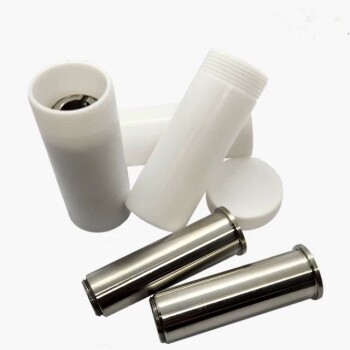Wiped film distillation is a specialized distillation technique used for separating and purifying heat-sensitive and highly viscous liquids. It involves creating a thin, turbulent film of the liquid on a heated vertical surface using rotating wipers or blades. This thin film enhances heat transfer and separation efficiency, allowing lighter components to vaporize while heavier residues are collected separately. The process is highly efficient, reduces thermal degradation, and is suitable for both batch and continuous operations. It is widely used in industries requiring high-quality distillates, such as pharmaceuticals, essential oils, and chemical processing.
Key Points Explained:

-
Mechanism of Wiped Film Distillation:
- The process begins with the crude oil or feed material being pumped into a vertical cylindrical evaporation column.
- Specially designed wipers or blades (often made of PTFE) rotate and distribute the liquid, creating a thin film (typically 0.1 to 0.5 mm thick) on the inner wall of the heated column.
- This thin film ensures efficient heat transfer and mass transfer, allowing lighter components to vaporize while heavier residues continue downward.
-
Heat Transfer and Vaporization:
- The outer wall of the evaporation column is heated, and heat is conducted through the thin film of liquid.
- Lighter fractions of the liquid vaporize due to the heat, while heavier components remain in liquid form and are collected at the bottom.
- The vaporized components travel to a condenser, where they are cooled and condensed back into liquid form.
-
Condensation and Collection:
- The vaporized components are condensed using an internal or external condenser, often cooled by a recirculating fluid.
- The distillate (condensed vapor) is collected in separate receiving vessels, ensuring high purity and quality.
- Terpenes and other volatile compounds can be captured using additional condensers if required.
-
Operational Modes:
- Wiped film distillation can operate in both batch and continuous modes.
- In continuous mode, the process is highly efficient and increases productivity, making it suitable for large-scale production.
- Batch mode is used for smaller-scale operations or when processing highly sensitive materials.
-
Advantages of Wiped Film Distillation:
- Reduced Exposure Time: The thin film ensures minimal exposure of the material to high temperatures, preserving the quality of heat-sensitive components.
- High Efficiency: The turbulent film enhances heat and mass transfer, leading to better separation and higher-quality distillates.
- Customization: The process can be tailored to specific requirements, such as adjusting wiper speed, temperature, and vacuum levels.
- Scalability: Suitable for both small-scale and large-scale production, with continuous mode offering significant productivity gains.
-
Applications:
- Wiped film distillation is widely used in industries that require the purification and separation of heat-sensitive and viscous liquids.
- Common applications include the production of essential oils, pharmaceuticals, cannabis distillates, and chemical processing.
- It is also used for devolatilization, stripping unnecessary compounds, and achieving high-purity end products.
-
Process Optimization:
- Key parameters such as temperature, vacuum pressure, and feed rate must be carefully optimized for optimal results.
- The use of automatic dosing pumps ensures precise control over the feed rate, while recirculating heaters and refrigerated circulators maintain consistent temperature conditions.
-
Equipment and Components:
- The primary components of a wiped film distillation system include:
- Vertical cylindrical evaporation column with heated outer walls.
- Rotating wipers or blades to create the thin film.
- Internal or external condensers for vapor condensation.
- Receiving vessels for collecting distillate and residue.
- Vacuum system to reduce boiling points and prevent thermal degradation.
- The primary components of a wiped film distillation system include:
-
Quality and Purity:
- The process typically requires two passes through the system to achieve a high-quality distillate.
- The final product is of extremely high purity, making wiped film distillation ideal for applications where quality is paramount.
By leveraging the unique advantages of wiped film distillation, industries can achieve efficient separation and purification of complex liquids while minimizing thermal degradation and maximizing productivity.
Summary Table:
| Aspect | Details |
|---|---|
| Mechanism | Thin film created by rotating wipers enhances heat and mass transfer. |
| Heat Transfer | Heated outer wall vaporizes lighter components; heavier residues collected. |
| Condensation | Vaporized components condensed using internal/external condensers. |
| Operational Modes | Batch and continuous modes for flexibility and scalability. |
| Advantages | Reduced thermal degradation, high efficiency, and customization. |
| Applications | Pharmaceuticals, essential oils, cannabis distillates, and more. |
| Equipment | Evaporation column, wipers, condensers, vacuum system. |
| Quality | High-purity distillates achieved in two passes. |
Optimize your distillation process with wiped film technology—contact us today!











